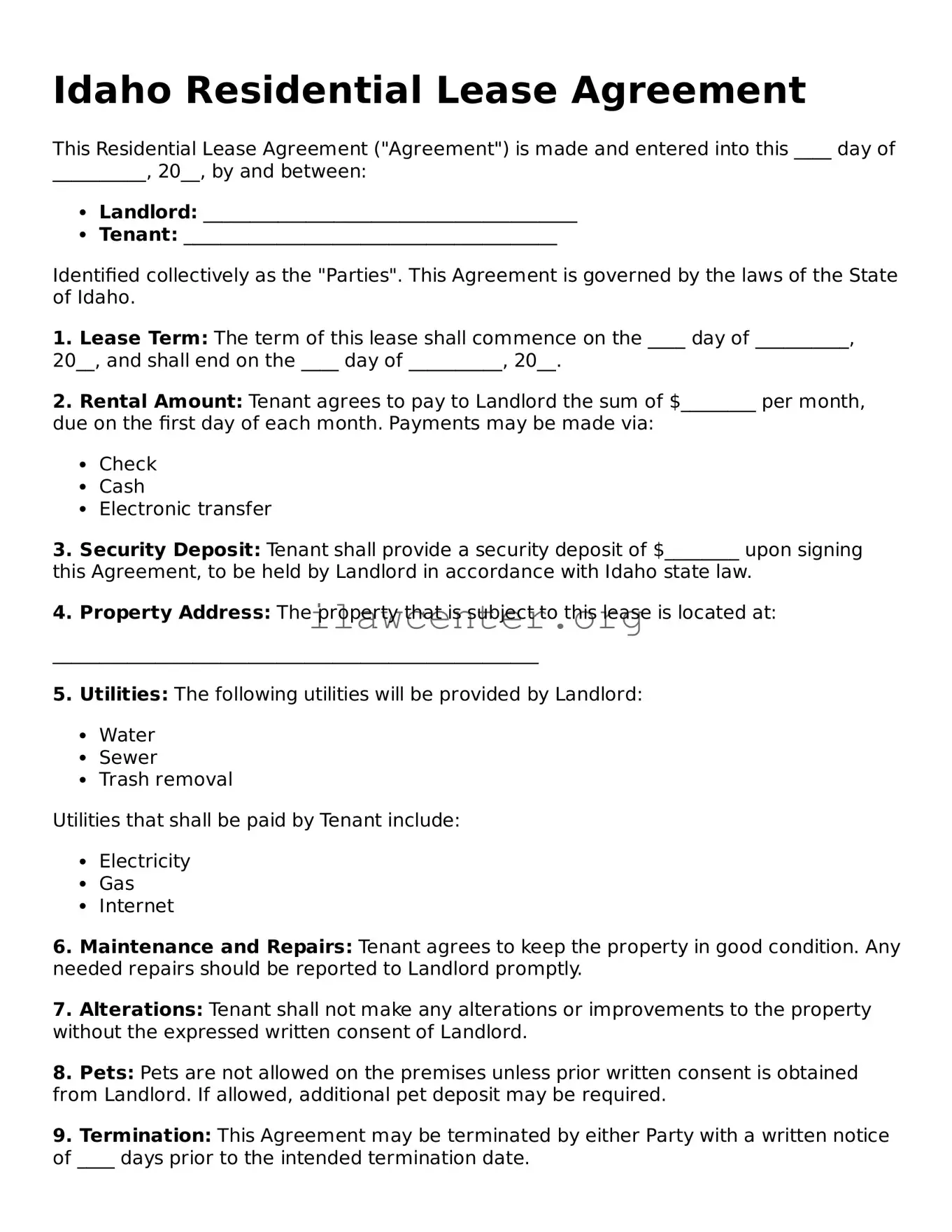Instructions on Utilizing Idaho Residential Lease Agreement
Getting ready to fill out the Idaho Residential Lease Agreement form can feel a bit overwhelming, but with a clear plan, it's a straightforward process. This document is essential for both landlords and tenants to set clear expectations. When completed accurately, it serves as a reliable reference for the rental relationship. Follow these steps to ensure the form is filled out correctly.
- Gather Information: Collect all necessary details including names, addresses, and rental terms before starting the form.
- Property Address: Fill in the complete address of the rental property, ensuring it’s accurate.
- Landlord Information: Enter the landlord's name and contact information, including a phone number and email address.
- Tenant Information: Provide the tenant's name(s) and contact information. If there are multiple tenants, include each one.
- Lease Term: Specify the duration of the lease—be it month-to-month or a fixed term, like one year.
- Rent Amount: Indicate the monthly rent amount and the due date when it should be paid.
- Security Deposit: Provide details about the security deposit, including the amount and any conditions for its return.
- Utilities: Clarify which utilities are the responsibility of the tenant and which are covered by the landlord.
- Sign and Date: Ensure both the landlord and tenant sign and date the agreement. This step confirms mutual acceptance of the terms.
Once you’ve completed each section, carefully review the form to double-check for accuracy. Both parties should keep a signed copy for their records, helping to maintain a clear understanding throughout the lease term.
